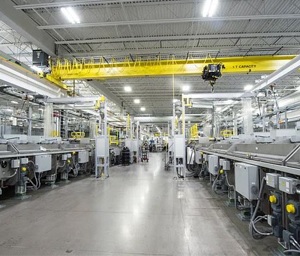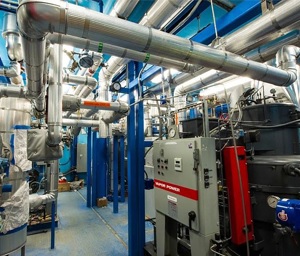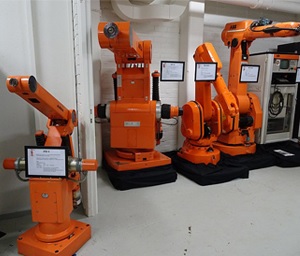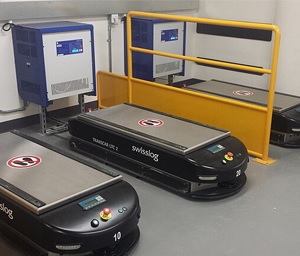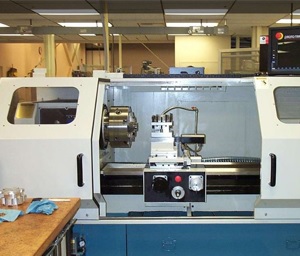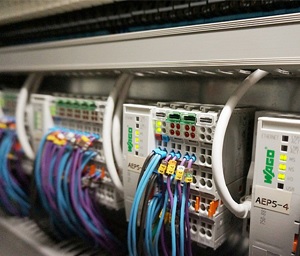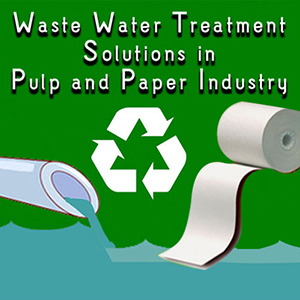The Role of Automation in Modern Paper Mills
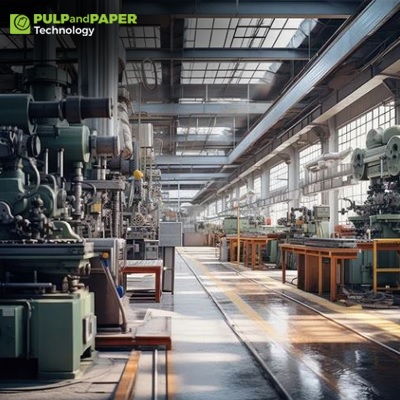
In the ever-evolving landscape of the paper industry, modern paper mills are increasingly turning to automation to enhance efficiency, reduce costs, and improve overall productivity. The integration of advanced technologies such as predictive maintenance, energy management, process automation, and various types of industrial robots is transforming traditional operations into smart paper mills. Predictive maintenance allows modern paper mills to anticipate equipment failures, minimizing downtime and maintenance costs. Efficient energy management and the use of an energy management system optimize energy consumption, contributing to cost savings and sustainability. Process automation streamlines production processes, making modern paper mills more efficient and reliable. The deployment of various industrial robots like palletizers, mobile robots, pick and place robots, and cartesian robots plays a significant role in enhancing productivity and precision in smart paper mills. This article delves into the crucial role of automation in modern paper mills, exploring key technologies and their impact on the industry, showcasing how predictive maintenance, energy management, process automation, and industrial robots are pivotal in transforming traditional operations into smart paper mills.
Predictive Maintenance
Predictive maintenance is a game-changer in the realm of modern paper mills. By leveraging data analytics and machine learning algorithms, modern paper mills can predict equipment failures before they occur, minimizing downtime and maintenance costs. This proactive approach ensures that machinery operates at peak efficiency, thereby enhancing overall productivity. Predictive maintenance not only extends the lifespan of equipment but also significantly reduces the risk of unexpected breakdowns, making it a vital component of smart paper mills.
In addition to predictive maintenance, the integration of energy management and process automation plays a crucial role in modern paper mills. An advanced energy management system optimizes energy consumption, contributing to cost savings and sustainability. Process automation streamlines production processes, making modern paper mills more efficient and reliable. The deployment of various industrial robots, such as palletizers, mobile robots, pick and place robots, and cartesian robots, further enhances productivity and precision.
Automatic guided vehicles, numerical control machining, PLC controlling, and PID controls are also integral to the automation of smart paper mills. These technologies ensure smooth and efficient operations, from material handling to precise control of machining processes. By incorporating predictive maintenance, energy management, process automation, and various types of industrial robots, modern paper mills are transforming into smart paper mills, setting new standards for efficiency and productivity in the paper industry.
Energy Management
Efficient energy management is critical in modern paper mills to reduce operational costs and minimize environmental impact. An advanced energy management system monitors and controls energy usage across the mill, optimizing energy consumption and reducing waste. By integrating energy management with process automation, modern paper mills can achieve significant energy savings, ensuring a more sustainable operation. This holistic approach to energy management is essential for maintaining competitiveness in the industry.
In smart paper mills, the combination of predictive maintenance, energy management, and process automation enhances overall efficiency. The use of industrial robots, such as palletizers, mobile robots, pick and place robots, and cartesian robots, further optimizes operations. Additionally, automatic guided vehicles streamline material handling, while numerical control machining, PLC controlling, and PID controls ensure precise and efficient processing. By integrating these advanced technologies, modern paper mills transform into smart paper mills, setting new standards for productivity and sustainability in the paper industry.
Process Automation
Process automation is at the heart of the transformation of modern paper mills into smart paper mills. Automated systems streamline various production processes, from raw material handling to finished product packaging. Utilizing process automation, modern paper mills can achieve higher production rates, improved product quality, and reduced labor costs. The integration of predictive maintenance and energy management further enhances the efficiency and reliability of these automated processes.
In smart paper mills, process automation involves the use of advanced technologies such as industrial robots, including palletizers, mobile robots, pick and place robots, and cartesian robots. These robots work in conjunction with automatic guided vehicles to ensure seamless material handling. Additionally, numerical control machining, PLC controlling, and PID controls contribute to the precision and efficiency of production processes. An effective energy management system optimizes energy consumption, complementing the benefits of predictive maintenance and process automation. Together, these technologies enable modern paper mills to evolve into smart paper mills, setting new benchmarks for efficiency, quality, and sustainability in the paper industry.
Industrial Robots
The deployment of industrial robots in modern paper mills has revolutionized the way tasks are performed. Industrial robots such as palletizers, mobile robots, pick and place robots, and cartesian robots perform repetitive and labor-intensive tasks with high precision and speed. These industrial robots significantly reduce the risk of human error and enhance the overall efficiency of the production line in modern paper mills.
In smart paper mills, the integration of industrial robots with predictive maintenance, energy management, and process automation systems further boosts productivity. An advanced energy management system ensures optimal energy usage, while process automation streamlines operations. Additionally, automatic guided vehicles facilitate efficient material transport, and technologies like numerical control machining, PLC controlling, and PID controls provide precise control over manufacturing processes. The combined use of these technologies enables modern paper mills to transform into smart paper mills, achieving unparalleled levels of efficiency and reliability.
- Palletizer: A palletizer robot automates the stacking of products onto pallets, ensuring consistent and stable stacks. This automation improves throughput and reduces the physical strain on workers in modern paper mills.
- Mobile Robot: Mobile robots are used for transporting materials within the mill. These autonomous vehicles navigate through the mill, delivering raw materials and finished products with precision. Mobile robots play a crucial role in enhancing the efficiency of smart paper mills.
- Pick and Place Robot: A pick and place robot automates the process of picking up items and placing them in designated locations. This robot is crucial for tasks that require high speed and accuracy, significantly improving the productivity of modern paper mills through process automation.
- Cartesian Robot: A cartesian robot operates on three linear axes (X, Y, Z) and is used for tasks that require precise movement in a straight line. These robots are ideal for various applications, including material handling and assembly, enhancing the capabilities of smart paper mills.
The integration of these industrial robots with predictive maintenance, energy management, process automation, and advanced energy management systems ensures optimal performance and reliability in modern paper mills. The use of automatic guided vehicles, numerical control machining, PLC controlling, and PID controls further streamlines operations, transforming traditional mills into highly efficient and smart paper mills.
Automatic Guided Vehicles (AGVs)
Automatic guided vehicles (AGVs) play a crucial role in material handling within modern paper mills. These vehicles are equipped with sensors and navigation systems that allow them to move autonomously throughout the facility, transporting raw materials and finished products. AGVs enhance operational efficiency by reducing the need for manual labor and minimizing the risk of accidents in smart paper mills.
In the context of predictive maintenance and energy management, automatic guided vehicles work seamlessly with process automation systems to optimize workflows. By integrating AGVs with an advanced energy management system, modern paper mills can achieve better energy efficiency and resource utilization. The use of industrial robots such as palletizers, mobile robots, pick and place robots, and cartesian robots complements the functionality of AGVs, further improving the productivity of smart paper mills.
Additionally, technologies like numerical control machining, PLC controlling, and PID controls ensure precise and reliable operations within modern paper mills. By combining predictive maintenance, energy management, process automation, and the strategic deployment of automatic guided vehicles, smart paper mills can achieve unprecedented levels of efficiency and safety.
Numerical Control Machining
Numerical control machining is another critical aspect of process automation in modern paper mills. This technology involves the use of computerized systems to control machining tools, ensuring precise and consistent production of components. Numerical control machining enhances the quality and accuracy of manufactured parts, contributing to the overall efficiency of the mill.
In smart paper mills, numerical control machining works in tandem with predictive maintenance and energy management systems to optimize production processes. The integration of numerical control machining with PLC controlling and PID controls ensures high precision and reliability in manufacturing. By incorporating process automation, modern paper mills can achieve superior quality control and efficiency.
The deployment of industrial robots such as palletizers, mobile robots, pick and place robots, and cartesian robots further enhances the automation capabilities of smart paper mills. Additionally, the use of automatic guided vehicles for material handling, combined with an advanced energy management system, ensures that modern paper mills operate at peak efficiency. Through the strategic application of predictive maintenance, energy management, and process automation technologies, including numerical control machining, smart paper mills are setting new standards in the industry.
PLC Controlling and PID Controls
Programmable logic controllers (PLC controlling) and proportional-integral-derivative (PID controls) are fundamental to the automation of modern paper mills. PLC controlling systems manage and automate various industrial processes, while PID controls regulate the conditions of processes, such as temperature, pressure, and flow rates. These control systems ensure that production processes operate smoothly and efficiently, maintaining optimal performance levels in smart paper mills.
In the context of predictive maintenance and energy management, PLC controlling and PID controls play a vital role in coordinating and optimizing operations. The integration of PLC controlling with process automation systems ensures precise control over machinery and equipment, contributing to enhanced productivity. Similarly, PID controls help maintain consistent and controlled conditions within modern paper mills, improving quality and reliability.
When combined with technologies like industrial robots (palletizers, mobile robots, pick and place robots, cartesian robots) and automatic guided vehicles, PLC controlling and PID controls contribute to the overall efficiency and performance of smart paper mills. The utilization of an advanced energy management system further enhances the capabilities of these control systems, ensuring sustainable and optimized operations in modern paper mills.
Conclusion:
The integration of automation technologies such as predictive maintenance, energy management, process automation, and various industrial robots is transforming modern paper mills into smart paper mills. The use of automatic guided vehicles, numerical control machining, PLC controlling, and PID controls further enhances the efficiency and reliability of these operations. By embracing these advanced technologies, the paper industry can achieve higher productivity, reduced costs, and improved sustainability. The future of paper mills lies in the continued adoption and advancement of automation technologies, ensuring a more efficient and competitive industry.


